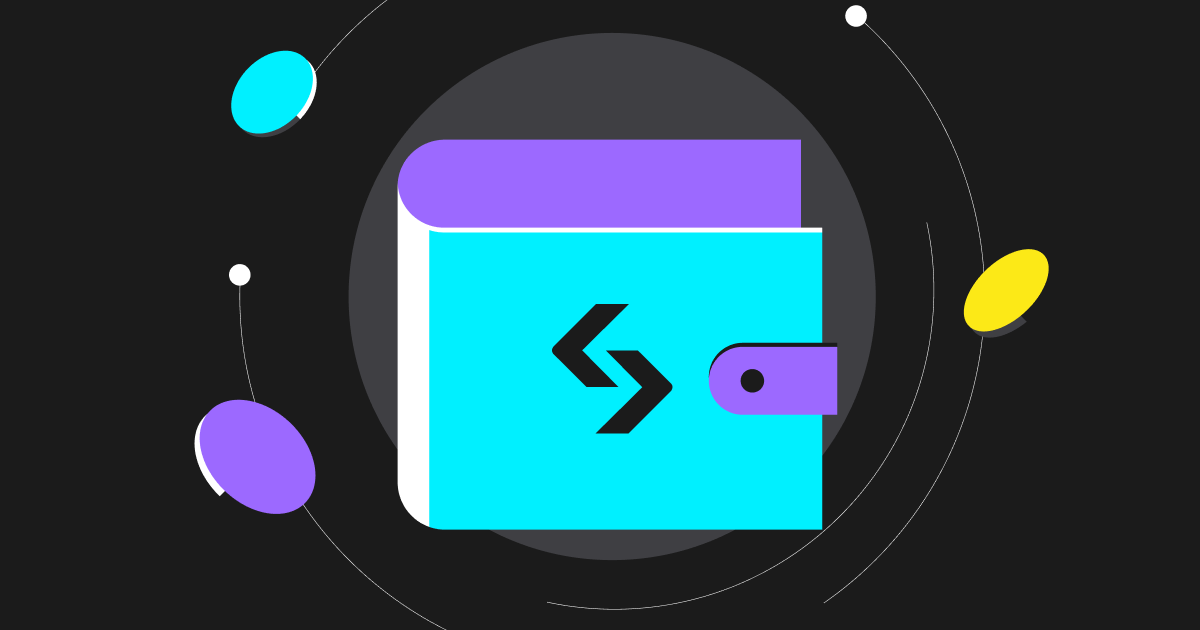
Can You Look Up Bitcoin Wallets? Here’s What You’ll Actually See
If you’re new to Bitcoin, you might be wondering, can you look up Bitcoin wallets? The short answer is yes – and it’s a key feature of how Bitcoin works. Every Bitcoin transaction is recorded on a public ledger called the blockchain, which means anyone can view the activity of a Bitcoin wallet address. You don’t need special access or a password, just the address and a blockchain explorer.
But while wallet activity is visible, the identity behind that wallet usually isn’t. Bitcoin is pseudonymous, not anonymous, so you can see how much Bitcoin a wallet holds and where it's been sent, but you won’t see a name attached to it. In this guide, we’ll break down exactly what you can (and can’t) see when looking up a Bitcoin wallet, how to do it, and why this transparency is both powerful and useful for beginners.
What Is a Bitcoin Wallet?

Before diving into how to look one up, let’s get clear on what a Bitcoin wallet actually is. A Bitcoin wallet is a digital tool that lets you store, send, and receive Bitcoin. Think of it like an app or device that holds the keys to your Bitcoin, not the coins themselves. The coins live on the blockchain, but your wallet gives you access to them by storing your private keys securely.
There are different types of wallets, ranging from simple mobile apps to more secure hardware devices. But at the core, every Bitcoin wallet includes two important parts:
-
A public address (like your bank account number) that others can use to send you Bitcoin
-
A private key (like your PIN or password) that only you should know and use to authorize transactions
Read more: Which Bitcoin Wallet Is REALLY the Best? Are You Using It?
Types of Bitcoin Wallets
1. Hardware Wallets
These are physical devices (like USB sticks) that store your private keys offline. Because they’re disconnected from the internet, they offer strong protection against hacking. Popular brands include Ledger and Trezor. They’re ideal if you plan to hold Bitcoin long-term and want maximum security.
2. Software Wallets
These run on your computer or smartphone and are super convenient for everyday use. They’re connected to the internet and easy to use. Examples include apps like Bitget Wallet.
Join 80M+ crypto users and counting. Download Bitget Wallet now!
3. Paper Wallets
This old-school method involves printing your public and private keys on a piece of paper. It’s completely offline, which makes it secure in theory, but easy to lose or damage. If someone else finds it, they can access your funds. Not as common today, but still used by some for cold storage.
4. Custodial Wallets
With custodial wallets, a third party (like a crypto exchange) holds your keys for you. This is the easiest way to get started, especially if you’re buying Bitcoin on a platform. The tradeoff? You don’t control your private keys, which means you’re trusting someone else with your funds.
Can You Look Up Bitcoin Wallets?
Now that you know what a Bitcoin wallet is, let’s answer the big question: Can you look up Bitcoin wallets? Yes – and it’s surprisingly simple.
Because Bitcoin operates on a public blockchain, every transaction is recorded on a digital ledger that anyone can access. That means if you have someone’s public Bitcoin address, you can look it up using a blockchain explorer and see:
-
The current balance in that wallet
-
All incoming and outgoing transactions
-
Dates, amounts, and the wallet addresses involved in each transaction
But here’s the catch: even though the activity is public, the identity behind the wallet usually isn’t. Bitcoin addresses are pseudonymous, they don’t include names or personal details. So you might see that one wallet sent 0.5 BTC to another, but unless the owner has publicly linked their identity to the address, you won’t know who’s behind it.
In short: you can see what a wallet has done, but you usually can’t tell who owns it. That’s part of what makes Bitcoin transparent yet private at the same time.
How to Look Up a Bitcoin Wallet (Using Blockchain Explorers)
If you want to see what’s happening inside a Bitcoin wallet, you’ll need a tool called a blockchain explorer. Think of it like a search engine for the Bitcoin network, it lets you look up wallet addresses, transactions, and even entire blocks of data.
Here’s how to do it:
1. Go to a blockchain explorer website: Popular options include Blockchain.com, Blockstream.info, and Blockchair.
2. Enter the Bitcoin wallet address: Paste the address into the search bar (it will look like a long string of letters and numbers). Hit enter.
3. View the wallet activity: The explorer will show you everything publicly available about that address:
-
Total balance
-
Number of transactions
-
Incoming and outgoing transfers
-
Dates, transaction IDs, and amounts
4. Dig deeper if you want: You can click on specific transactions to view more details, or even follow the trail of Bitcoin to other wallets.
The best part? You don’t need to log in or create an account, these tools are free and open to everyone. Just remember: you’re viewing public information only. You can’t move or access the Bitcoin in a wallet just by looking it up.
Public vs. Private Keys: What Information Is Public?
To understand what you’re actually seeing when you look up a Bitcoin wallet, it’s important to know the difference between public keys and private keys.
Public Key (Wallet Address)
This is the part you can safely share. It’s like your account number in the Bitcoin system. People use it to send you Bitcoin, and it’s what appears on blockchain explorers. The balance and transaction history tied to a public address are visible to anyone.
Private Key
This is your secret. It’s what proves you own the Bitcoin in a wallet and gives you the ability to send or transfer those funds. If someone else gets access to your private key, they can control your coins. That’s why it should always be kept secure and never shared.
What’s visible to the public?
When someone looks up a Bitcoin wallet address, they can see:
-
The current balance of that wallet
-
The complete transaction history (dates, amounts, other wallet addresses involved)
-
The number of transactions made by the wallet
What they can’t see:
-
The wallet owner’s name or identity
-
The private key
-
Any personal information tied to the wallet
Bitcoin offers transparency through its public ledger, but also protects user privacy by keeping identities separate from wallet addresses, unless users choose to reveal them.
Why Would People Look Up a Bitcoin Wallet?
You might be wondering, why would anyone want to look up a Bitcoin wallet in the first place? There are several common and legitimate reasons to do so, especially for beginners trying to understand how the blockchain works.
Tracking Payments
One of the most frequent reasons is to verify that a transaction was completed. If you send Bitcoin to someone (or receive it), you can look up the wallet address to confirm the funds arrived. It’s like checking a delivery status, only on the blockchain.
Checking Wallet Balances
Users often check their own wallet addresses (especially for paper or hardware wallets) to monitor balances without needing to open their wallet app. Others may watch donation wallets or public addresses shared by influencers, charities, or businesses.
Curiosity and Research
Since blockchain data is open, some people simply like to explore. They might follow “whale” wallets with large amounts of Bitcoin to see how big players move their funds, or observe transaction patterns out of curiosity or for market insights.
Security Monitoring
Wallet owners may check their addresses regularly to ensure there are no unexpected outgoing transactions. It’s a good habit for long-term holders to make sure their funds remain untouched.
Avoiding Mistakes
Before sending Bitcoin, users may look up the recipient’s address to ensure it’s valid and has been used before. While not required, this adds peace of mind, especially when dealing with large amounts.
In all these cases, the blockchain’s transparency becomes a useful tool. It helps users stay informed, verify activity, and better understand the flow of Bitcoin across the network.
Conclusion
Looking up Bitcoin wallets might sound technical at first, but as you’ve seen, it’s actually pretty straightforward. With just a wallet address and a blockchain explorer, anyone can check transaction histories, balances, and even track payments in real time. It’s a unique feature that sets Bitcoin apart from traditional financial systems, and it’s one of the reasons people trust the network.
At the same time, it’s important to understand the limits of what you’re seeing. The blockchain shows what happened, but not who was behind it. That balance between openness and privacy is a core part of Bitcoin’s design. Now that you know how it all works, you can explore the blockchain with confidence and curiosity, just like the rest of the crypto world.
Register now and explore the wonderful crypto world at Bitget!
Disclaimer: The opinions expressed in this article are for informational purposes only. This article does not constitute an endorsement of any of the products and services discussed or investment, financial, or trading advice. Qualified professionals should be consulted prior to making financial decisions.



